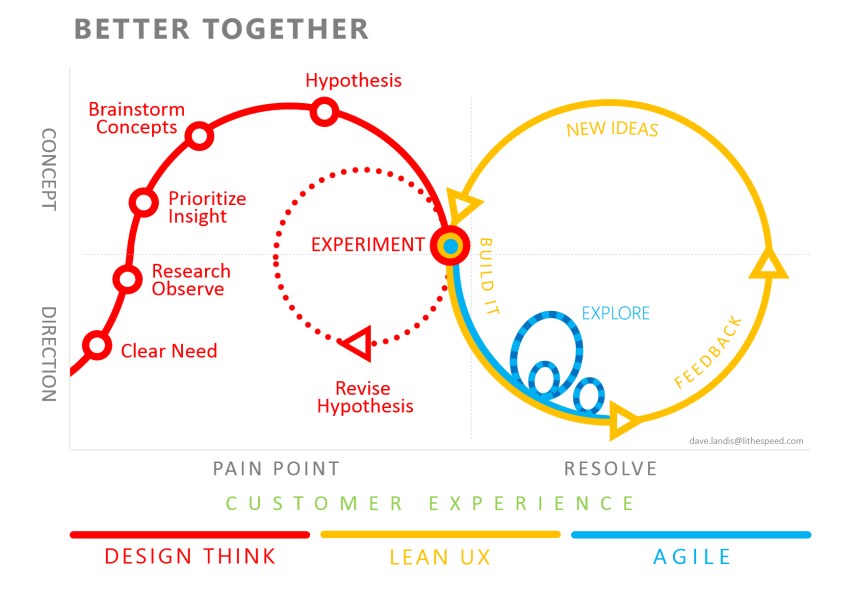Who are we designing for? What are we designing? What outcomes are we targeting? What are the end-to-end user journeys as boundaries blur between consumers, stores and consumer brands?
How do you approach the messaging and the storytelling, especially given the challenges of channel proliferation? How do you break through the clutter? The first step in every digital strategy is to develop personas that segment the audience and serve as the foundation for customer UX and journey mapping analysis.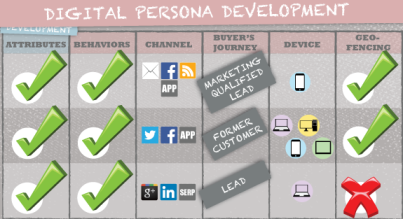
The best practice firms start with the user. Working from the perspective of the client who consumes a product or service, they focus on personas or “one idealized digital user.”
The goal is to think about the prospect, consumer, user as a human being. What matters in his or her life. Why? Because users do not wake up in the morning and think, “I need a new app today,” for example. People wake up in the morning and worry about getting to work, getting kids to school, where to meet friends for dinner, paying your bills and saving for the future.
Understanding the persona and the daily journey is critical in modern experience design. If marketing is going to interrupt you with something that they think is important to you, they have to find a way to tell the user about it so that it resonates with the user. There has to be a benefit to user. There has to be substance. Hence the need for real-world story-telling and context.
What is a digital persona?
Personas are fictional characters used to represent specific segments that interact with the brand across a variety of touchpoints. Personas characterize attitudes, values and behaviors of customer segments, and draw from various inputs to accurately depict the customer. They are helpful in distilling key information into more succinct stories that can be quickly understood. Personas are developed using qualitative research interviews, ethnographic studies – talking to real people about their real needs, motivations and behaviors.
Why is digital persona development important? The new battlefield is the customer journey and its various touchpoints across the lifecycle: AWARENESS → CONSIDERATION → PURCHASE → LOYALTY → ADVOCACY.
Across every industry, consumerization is changing how People they interact with businesses. Traditionally, most businesses have followed the same marketing and sales playbook to generate leads, close sales and provide support to their customers as they did 10-15 years ago. Businesses need a more effective way to humanize the target audience in order attract, engage and delight customers who have access to an abundance of information and an ability to block traditional marketing and sales tactics. To do this, businesses need to deliver an customized experience, which enables them to be more helpful, more relevant and less interruptive to their customers.
I believe an effective way to illustrate how people have transformed the way they consume information, research products and services, make purchasing decisions and share their views. You get a sense of this by reviewing these general personas – Digital Susan, Social Ashley, Introvert Dave, Modern Meghan and Traditional Ted.
Digital Susan and her Journeys
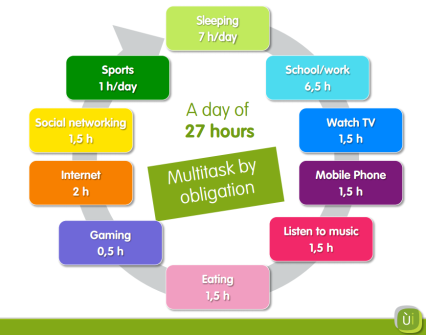 Susan is a generation Z teen studying and living in San Francisco. Susan is a multi-tasking digital native who feels naked without her smartphone.
Susan is a generation Z teen studying and living in San Francisco. Susan is a multi-tasking digital native who feels naked without her smartphone.
Everything she does revolves around the mobile phone. She uses her phone continuously during the day. The first thing she does when she gets up is check Facebook Newsfeed and WhatsApp for messages. She gets on the BART and is immersed in the Netflix mobile streaming video watching a new episode of “Orange is the New Black.”
She is constantly texting her friends throughout the day. She only phones to speak to mom or dad. All shopping is e-commerce. She is part of the generation that connects to Facebook before she gets out of bed, and connects to Facebook in bed before going to sleep. Her typical multi-tasking day involves:
- Social networking
- Listening to music
- Watching videos
- Taking pictures
- Gaming Apps
- Surfing the Internet
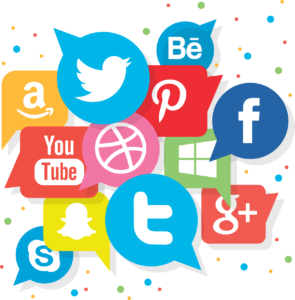 Social Ashley
Social Ashley
Social Ashley is a new marketing employee at a digital agency. Ashley is in her 20s – a millennial. She is highly sociable; actively participates in online communities & social networks with her friends. She uses the Web extensively for socializing & networking.
She is always online (a digital native). Her most popular online activities are Snapchat, Facebook, Instagram, Netflix, Buzzfeed and Spotify. Ashley has a lot of friends who follow her and is extremely influential in swaying opinions.
Ashley records her life in detail using Instagram – what she eats, where she parties, what she is feeling and who she is dating. Ashley binge watches TV on the weekend using Hulu Plus and Amazon Prime.

Introvert Dave
Introvert Dave is a coding savant at a software company in Denver. He is highly technically literate and technology focused. He is interested in immersive experiences; and actively participates in role playing games. He is a heavy consumer of dynamic media – video clips, animation, streaming film and Over-the-top (OTT) TV. He spends over 40 hours per week online outside work. Dave is beginning to use VR headsets from Occulus to experience Virtual Reality. Dave has very few friends and keeps mostly to himself. In his free time, Dave relaxes by smoking pot and watching TV shows on Hulu.
Modern Meghan
Modern Meghan, in her 30s, is a marketing executive at a large firm. She keeps up to date on her industry by reading a number of industry blogs, following key companies and influencers on Twitter and LinkedIn and listening to podcasts in her car during her commute. She has an ad blocker running in her web browser and an email filter to block out unwanted messages. She rarely checks her mail because it is mostly “junk.” Meghan does not have a landline phone because “only salespeople call me there,” and she never answers her mobile unless she recognizes the number.
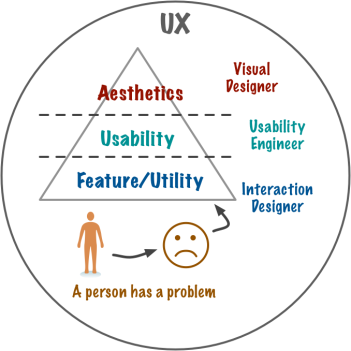 Meghan spends much more time on her phone using apps and the web than she does talking on it. If she is looking for a vendor for something her company needs, she starts by searching on Google and then asking her peers in her LinkedIn network about their experiences with different vendors. She does not even bother to talk to any of the vendor’s salespeople until she has narrowed the list and has already completed most of her decision-making process. When Meghan has trouble with one of her vendors, she contacts the vendor, but if she is not satisfied with the response, she sometimes writes a negative review online and posts a link to it on Twitter. In her free time, Meghan relaxes by watching TV shows she has previously recorded on her DVR so she can fast forward through the commercials.
Meghan spends much more time on her phone using apps and the web than she does talking on it. If she is looking for a vendor for something her company needs, she starts by searching on Google and then asking her peers in her LinkedIn network about their experiences with different vendors. She does not even bother to talk to any of the vendor’s salespeople until she has narrowed the list and has already completed most of her decision-making process. When Meghan has trouble with one of her vendors, she contacts the vendor, but if she is not satisfied with the response, she sometimes writes a negative review online and posts a link to it on Twitter. In her free time, Meghan relaxes by watching TV shows she has previously recorded on her DVR so she can fast forward through the commercials.
Traditional Ted
Traditional Ted, in his 50s, is an executive at a Fortune 500 corporation. He is a workaholic. To relax, Ted watches TV and reads the newspaper, both of which contain advertisements. He keeps up to date on his industry by attending trade shows and reading the monthly industry print publication, often scanning the ads to see the vendors’ new products. He gets a fair amount of unsolicited emails from salespeople and marketers and sees an increasing number of ads on websites he visits. He also takes sales calls from vendors to stay current on industry developments.
Ted opens his mail daily, and when his phone rings, he answers it because it’s his primary communication tool. When Ted is looking for a new vendor, he will try to recall the ads he has seen recently or go through the brochures he has been mailed which he keeps in a file in his desk. If Ted is frustrated with a vendor, he calls the vendor and tells a couple of his colleagues about his bad experience.
I believe all of us are becoming more like Ashley, Dave or Meghan and less like Traditional Ted. Yet, most businesses are still doing marketing, sales and service as if everyone is like Ted. To be effective today, businesses need to transform to attract, engage and delight customers like Susan, Ashley, Dave or Meghan.
Example of a Digital Persona Development
Personas put a face on the customer. They allow you to walk in the customer’s shoes across the lifecycle: AWARENESS → CONSIDERATION → PURCHASE → LOYALTY → ADVOCACY.
Because all the information generated from the various customer touchpoints through the lifecycle are typically stored in different disconnected point applications, it is often very difficult to get a 360-degree view of a customer’s interactions and behavior.
Below is an interesting example from Roundarch which developed a digital strategy for Avis Budget Group, the car rental firm. They partnered to focus on a “go to where the customer is” strategy for digital marketing/commerce including a redesigned Web site, mobile apps, and fully-functional booking widgets.
After developing the personas RoundArch apparently worked with Avis to completely redesign the car rental experience on Avis.com. The rental process was reduced from 5 clicks on different pages to 3 clicks all on one page while displaying choices and prices dynamically to improve conversion.
For other interesting Persona examples click HERE.
Summary
Companies need to become better story-tellers… “Your life just got better because now you can do this” or “your life will change because our product will do this.” The goal is to think like the user and ask: “Okay, why does the user need this product/service/capability? What is going to change in a person’s life if they have this? What’s unique about this? What’s truly great about it?” There has to be substance there.
The five personas listed above are some of the most common characteristics that i have come across in my work. The next step is to further customize or enhance these for specific context to guide branding and marketing efforts. Persona development enhances the customer journey mapping work.
The overall end-to-end Lean UX process
Specific Persona -> Wireframes -> Functional spec -> Development -> QA/Testing -> Deployment


